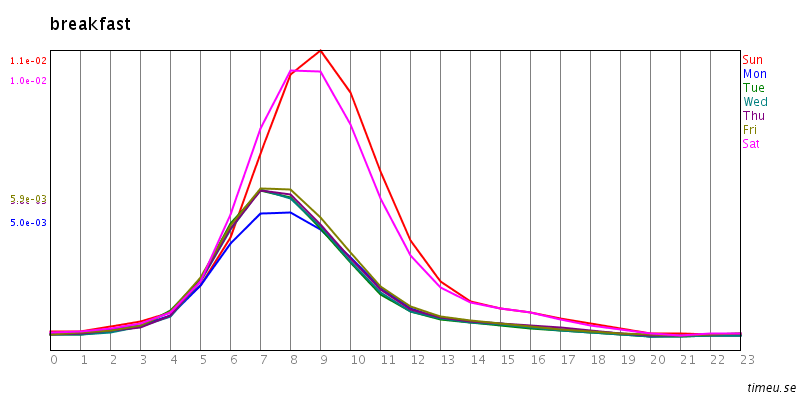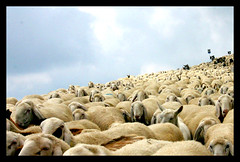
television sets-outdoor television – New York Times.
Related articles
- Free NYC Outdoor Theater Celebrates 50 Years (voanews.com)
- Outdoor theater: Star Trek’s final frontier (cbsnews.com)
- Best Outdoor Home Theaters 2012 (cepro.com)


television sets-outdoor television – New York Times.

UMSI.

CS224W Social and Information Network Analysis | Stanford University Online.


How an informatics analyst at Infinity Pharmaceuticals Inc. in Cambridge used a U-haul, duffel bag and the native knowledge of local ranchers in Boise, Idaho to acquire cyclopamine from the corn lily plant which normally costs $22,000 a gram…


Increasingly I’ve noted the rise in the rental economy in the USA as the previous ownership mentality of many Americans traumatized by economic collapse and wealth inequalities is replaced by one of access. One interesting example of this is college students who, according to a slew of recent articles, are now taking over McMansions which have gone into foreclosure. For example in Merced, CA, students at the local U. California school are now able to rent one of hundreds of foreclosed luxurious homes in overbuilt planned communities for a bargain price and enjoy amenities such as jacuzzis, pools, three-car garages, wall-to-wall carpeting, granite kitchen countertops, walk-in closets, inviting gas fireplaces, light-filled living rooms, master bathroom sinks. Not the same as the cramped dorm room of our college years, eh? On-campus room and board is $13,720 a year, compared with roughly $7,000 off-campus. But renting a McMansion they can each get a bedroom and often a private bath, pay $200 to $350 a month each.
Students find lush living for $300 a month – Boston.com.


Most adults I know dismissed Twitter, with only 140 characters at their disposal, as a waste of time just a year ago. But after the Iranian revolts, the Arab Spring and the London riots in which Twitter played a key part, it is not so easily dismissed anymore. But its seemingly brief and trivial nature is now proving to be its key advantage: it provides a constant thermometer of public sentiment with a time stamp and tidy little packaging. Just as molecular biology has allowed us to reduce physical life to traceable and analyzable bits ready for computers to digest, so is Twitter creating those bits out of our social experience. And this is the realm of anthropology.
One recent article examines several Cornell social scientists who are doing just that, analyzing 509 million tweets, gathered between February 2008 and January 2010, using linguistic software to score their positivity based on word choices. The noted a mood timeline for 2.4 million individuals from 84 countries, and noted that happiness has a peak in the morning (see graph below from their website, http://timeu.se/) before the typical workday begins, and then fades as the day progresses, only to climb again late in the day. Rather be due to work (as one would expect) they suggest it is due to biology since it occurs on weekends as well (explaining our love of sleeping in, as it delays the high).
Science and Twitter #mixwell – Boston.com.


An interesting article which points out some social downsides to the Internet including the fact that almost everything now comes with a sea of reviews and ratings making the act of discovering something entirely oneself a little more difficult.
Rate This Article: What’s Wrong with the Culture of Critique | Wired Magazine | Wired.com.


The new startup Narrative Science is slowly replacing many of the stories you read every day by using computational linguistic algorithms to summarize data from online sources on subjects from finance to sports. It is also scaring the pants off of journalists everywhere.
.

I love this photographer. Sheep, tobacco barns, barehanded beekeepers, and a bird in the bus.. Lynton is now photographing sheep farmers and tobacco harvesters in Western Massachusetts. Using sugar water as bait, Lynton collected slugs and set them loose until they wriggled into the composition she wanted. Her quest led to a beekeeper in New Mexico who works without protective clothing, and to fishermen [“noodlers”] in Oklahoma, who grasp hefty catfish in their bare arms. With her move to Western Massachusetts and a studio in North Leverett, Lynton is more engaged in local farming and, she says, “how aspects of meditative activity are involved in farming.” Currently Lynton is making photographs of people who work with sheep, including a fifteen-year-old girl who raises lambs for meat and a sheep shearer who wrestles 175-pound rams. “I don’t want to make cute pictures of sheep,” she declares, “so darkness comes out in the images…” “In the tobacco barns, I’m not looking to convey the nitty-gritty of the harvesting process, but the mystery of the atmosphere,” she says.
Preview Massachusetts: Art – No Safety Net.


Cities have been the engines of civilization for millennia, serving as places where the arts, commerce, and ideas flourish. But as we are reminded in a recent article, the close social interactions that make a city so productive also proved ideal for tuberculosis, measles, the plague, and many other diseases. In European capitals, circa 1800, deaths exceeded births; these cities only grew because of the influx of people from the countryside. An average man in 19th-century Paris was physically shorter than his rural counterpart. Today, the physical threats of cities are being exceeded by mental ones. People living in an urban setting are 21 percent more likely to experience an anxiety disorder, and 39 percent more likely to experience mood disorders. City life roughly doubles the chances a person will suffer from schizophrenia, and this threat increases with time in cities, like the effect of an accumulating toxin. The article notes that German scientists have found, for the first time, the specific structures in the brain affected by city life. Using brain scanners, they demonstrated that people who lived in cities showed a greater stress response in the amygdala, a brain area that processes emotions. And a second structure, which helps regulate the amygdala, showed a heightened stress response in people who were raised in cities, according to a report in the journal Nature.
The discovery suggests a specific mechanism by which cities, with their steady stress, might unbalance parts of the mind. Scientists can now look at particular aspects of urban design — a particular layout of streets, say, or the preponderance of straight lines — to see which ones cause the signature brain changes. Andreas Meyer-Lindenberg, one of the German scientists who led the research, says he has already begun to look into just these sorts of questions.
Cities on the brain – Boston.com.

You must be logged in to post a comment.